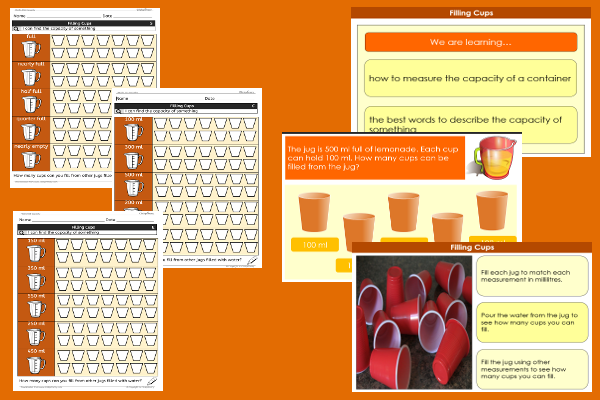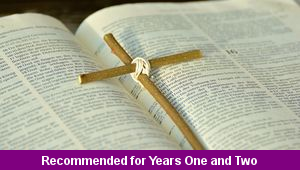Home > Key Stage One > Maths > Measurement > Capacity > Measurements
Filling Cups

This maths teaching pack for Key Stage One gets the children to explore how to identify and record how many cups can be filled using matching capacities in standard and non-standard units of measurement.
The class can explain and model how to divide some measurements that have been recorded in millilitres to find how many containers can be filled from different sized jugs.
Download this teaching pack including classroom activities and an interactive presentation to explore how to identify and record how many cups can be filled using matching capacities in standard and non-standard units of measurement
Activities in this teaching pack include a differentiated set of worksheets to measure and record how many of the same sized cups can be filled using capacities that have been listed in non-standard and standard units including the use of vocabulary words and measurements in millilitres.
The interactive presentation gets the children to explore and record how many cups can be filled using capacities measured in standard and non-standard units.
This lesson is part of a maths scheme of work to get the children to explain and model how to measure, calculate and record the capacities of different containers and vessels working with non-standard and standard units. There are teaching activities for shared learning, differentiated worksheets to support independent learning and interactive presentations to introduce concepts and key skills.
-

Vehicle Numbers
Investigate and record how to make and count models of objects to ten, twenty and thirty to match objects related to different types of vehicles
-

Bible Stories
Research and illustrate how the teachings of Jesus are presented in different stories from the Bible
-

Word Matching
Identify, match and record the initial sounds that have been used in a range of cvc words beginning with different letters
-

Family Toys
Investigate and record how a selection of different toys and games that were owned by families have changed and developed over time
